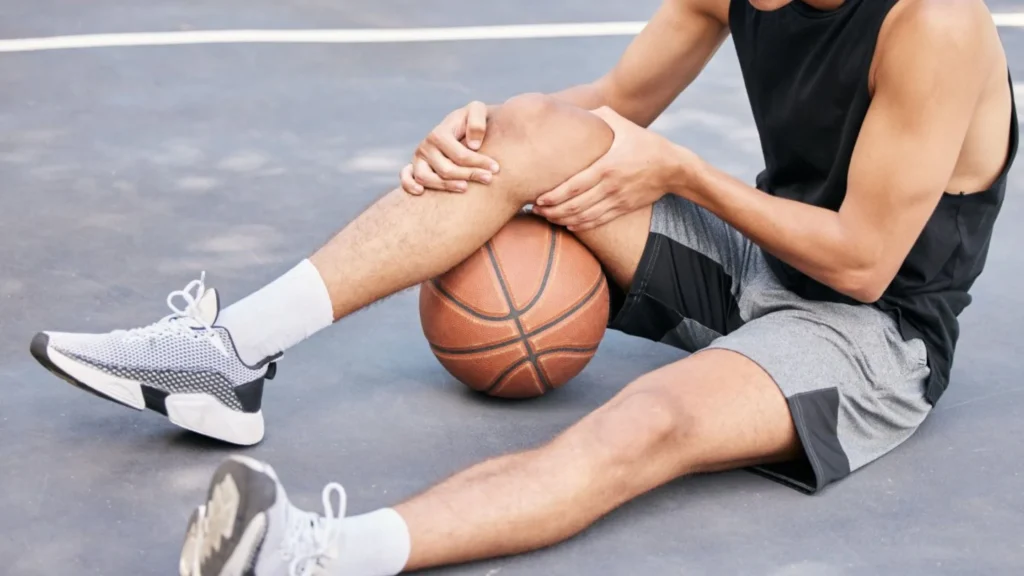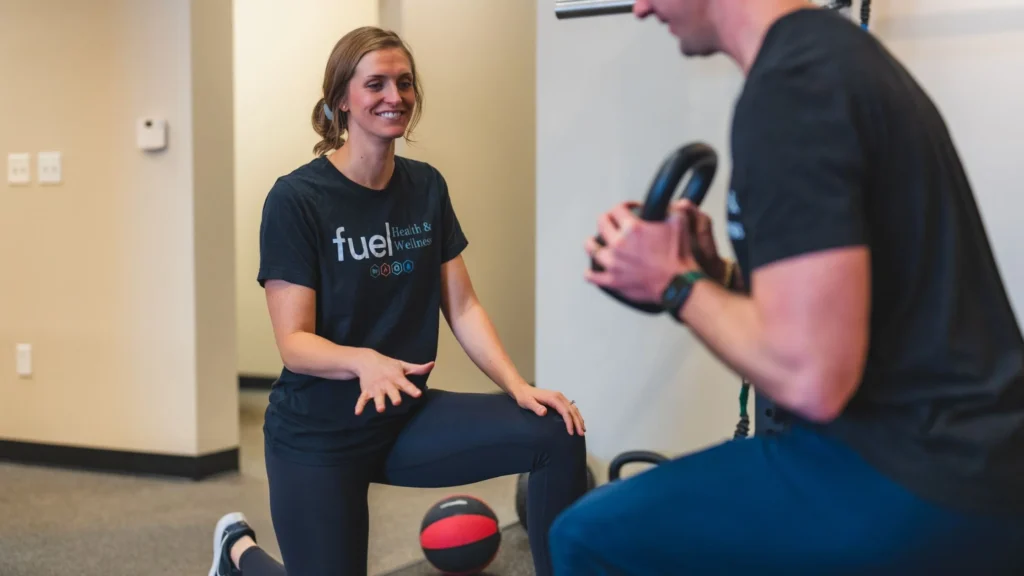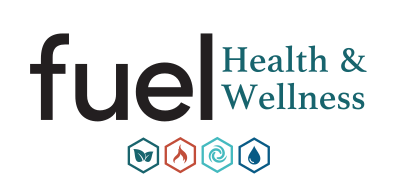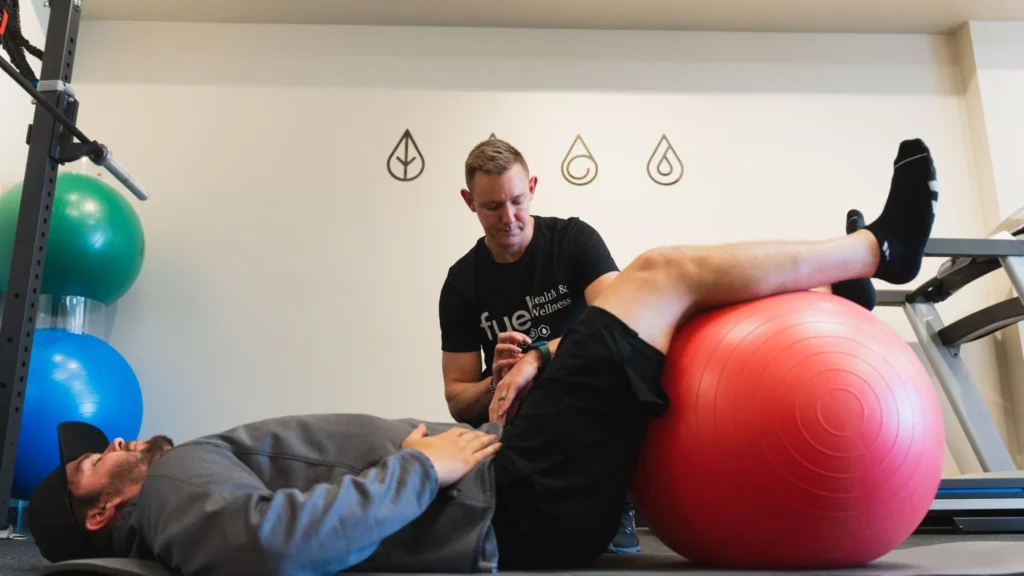Injuries during sports and physical activity can be disruptive, painful, and career limiting. For athletes and active individuals alike, preventing injuries is essential to sustain performance and maintain long-term health. Whether competing or training for recreational enjoyment, proper preparation, technique, and recovery play crucial roles. Grand Rapids professionals have long emphasized a holistic approach that includes understanding common sports injuries, implementing proactive preventative strategies, mastering proper techniques, scheduling regular check-ups, and allowing for adequate rest and recovery. Educating oneself on injury management and rehabilitation, in collaboration with fuelhealthwellness resources, further solidifies a strong foundation for ensuring peak performance and reducing the risk of repeated harm. With advancements in physical therapy in Grand Rapids and the evolving practices of strength coaching, the pursuit of durability not only enhances athletic achievement but also promotes a healthier lifestyle. For additional support or questions, feel free to contact us.
By taking a comprehensive approach, athletes at every level are empowered to train smarter, monitor their bodies with fuelhealthwellness support, and seek expert guidance to optimize their recovery. This article outlines key steps and strategies recommended by professionals in Grand Rapids—if you have more questions, simply contact-us—to keep athletes safe on the field, court, pool, or track. From understanding the causes of common injuries to the importance of periodic evaluations by healthcare experts, the advice provided here is designed to educate and prepare you to prevent injuries before they threaten your performance. Read on to discover actionable measures, real-world examples, and expert insights that have helped countless athletes maintain world-class performance and a sustainable, injury-free lifestyle.
Key Takeaways
- Understand the common causes behind sports injuries and the risk factors that contribute to them.
- Implement preventative techniques such as proper warm-ups, appropriate gear, and targeted conditioning.
- Use correct athletic techniques and receive professional training to minimize the risk of injury.
- Schedule regular health check-ups and adjust training plans based on medical advice.
- Prioritize rest, recovery, and rehabilitation for continuous performance improvement without injuries.
Understand Common Sports Injuries and Their Causes

Sports injuries can arise from a variety of sources and can affect any part of the body—from joints and muscles to bones and tendons. The first step in effective injury prevention is understanding the common injuries that athletes experience along with their underlying causes. This knowledge not only helps athletes recognize potential problems early on but also informs the design of training programs that minimize injury risk.
Learn About the Most Frequent Types of Sports Injuries
The most common sports injuries include strains, sprains, fractures, dislocations, and tendon injuries. Strains occur when muscles or tendons are stretched beyond their limits, often due to overexertion during high-intensity workouts. Sprains involve the overstretching or tearing of ligaments, which frequently happens around joints such as the ankle or wrist. Fractures can occur from direct impact or repetitive stress that weakens bone structure. Dislocations, which result when a joint is forced out of its normal position, and tendon injuries, especially in sports that require repetitive motion, like tennis elbow, are also widely seen. In many cases, a combination of poor technique and a lack of strength or flexibility can contribute significantly to the incidence of these injuries.
Recognize Risk Factors Contributing to Sports Injuries
Several factors increase an athlete’s risk of sustaining an injury. Overtraining without adequate rest, improper equipment, and failing to warm up properly are major contributors. Environmental factors such as extreme heat or cold, slippery surfaces, and uneven terrain further exacerbate the potential for injury. Additionally, biomechanical imbalances—like poor alignment or weakness in key muscle groups—can predispose athletes to injuries. Chronic conditions, such as arthritis or previous injuries, also heighten vulnerability. Awareness of these risk factors allows players and coaches to implement tailored preventive strategies such as adjusting training loads and ensuring proper nutrition and hydration.
Identify Specific Injuries for Various Sports Disciplines
Different sports carry unique injury profiles that require specialized preventive approaches. For example, runners are particularly susceptible to shin splints, stress fractures, and knee injuries due to repetitive impact. In contrast, contact sports such as football or rugby may lead to concussions, ligament tears, and joint dislocations because of the physical collisions inherent in the game. Swimmers might encounter shoulder impingements or tendonitis due to the repetitive overhead motions, while dancers experience strains and sprains from the physically demanding nature of their art. Recognizing which injuries are prevalent in specific sports helps athletes modify their training methods, use sport-appropriate gear, and focus on strengthening vulnerable areas. Tailored prevention strategies not only minimize the risk of injury but also contribute to sustained sports performance.
Implement Preventative Techniques Before Engaging in Sports

Preventative techniques are the cornerstone of avoiding sports injuries. These practices focus on preparing the body for the demands of physical activity. By emphasizing a comprehensive warm-up routine and ensuring proper equipment usage, athletes can significantly reduce their chance of injury. Professionals in Grand Rapids stress that prevention begins long before the first whistle of a game or the first lap of a race.
Warm Up Properly to Prepare Your Body for Activity
A robust warm-up protocol is critical in transitioning the body from a resting state to one ready for exercise. Warming up increases blood flow to muscles, elevates the body temperature, and gradually raises the heart rate—preparing tendons, ligaments, and muscles for strenuous activity. Effective warm-up routines should include dynamic stretching, light cardio such as jogging or cycling, and sport-specific drills that mimic the movements to be performed during the main activity. Research shows that athletes who incorporate dynamic stretches instead of static stretching during warm-ups experience improved range of motion and reduced injury rates by as much as 30%. A well-designed warm-up routine not only minimizes injury risk but also enhances performance by priming the neuromuscular system for speed and agility.
Use Appropriate Gear Tailored to Your Sport’s Requirements
Wearing the right equipment is paramount for injury prevention. Each sport requires specialized gear designed to protect vulnerable areas of the body. For instance, proper footwear with adequate cushioning and support can prevent issues such as shin splints or plantar fasciitis in runners. Helmets are essential in contact sports to safeguard against concussions and skull injuries. Similarly, padded gloves in baseball and knee braces in sports with rapid changes in direction help minimize the impact of high-force collisions or falls. It is equally important that the equipment fits properly; ill-fitting shoes or poorly designed protective gear can cause additional strain or even exacerbate pre-existing conditions. Regularly updating and maintaining sport gear according to manufacturers’ recommendations is also advised for consistent performance and protection.
Maintain Physical Conditioning Through Strength Training
Strength training and conditioning play a vital role in injury prevention. A well-rounded strength training program helps build muscle balance and improves joint stability. Strengthening specific muscle groups can reduce the load placed on ligaments and tendons, effectively lowering the risk of strains and sprains.
For example, exercises targeting the core and lower body are essential for runners, as they improve balance and minimize the risk of knee and ankle injuries. This is especially relevant for individuals recovering from the Role of Physical Therapy in Knee Replacement Recovery, where proper strengthening exercises aid rehabilitation. Similarly, athletes engaged in sports demanding significant upper-body involvement should focus on resistance training for the shoulders, back, and arms to bolster overall stability.
A scientifically informed conditioning regimen often involves periodization, a planned variation in workout intensity and volume, to prevent overtraining and give the body sufficient recovery time. Incorporating both aerobic exercises and resistance training enhances endurance and builds the foundation necessary for sustained high performance with reduced injury incidence.
Focus on Correct Techniques to Minimize Injury Risk

Proper technique is critical in the prevention of sports injuries. Athletes who focus on correct form not only optimize their performance but also significantly reduce the strain on their bodies during physical activities. Incorrect form, misalignment, and improper movements can lead to a cascade of minor issues that compound over time into serious injuries. Coaches and strength and conditioning experts in Grand Rapids advocate for methodical training practices that prioritize technique before intensity.
Master the Proper Form for Your Specific Athletic Activity
Mastering the correct form is the first step in minimizing the risk of injury. Whether it’s sprinting, jumping, or performing resistance exercises, small deviations in execution can place undue stress on muscles, tendons, and joints. For instance, maintaining a neutral spine during weightlifting prevents unnecessary load on the lumbar region, while proper foot arch positioning during running reduces the likelihood of developing plantar fasciitis. Athletes should work with coaches to receive personalized feedback and video analysis to repeatedly refine their technique. By consistently practicing correct form, athletes train their bodies to execute movements naturally and subconsciously, reducing the risk of injury even under fatigue. This discipline not only improves the quality of performance but also leads to enhanced proprioception, ensuring that athletes can adjust swiftly to unexpected movements or challenges during competition.
Train Under the Supervision of Skilled Professionals
Guidance from expert coaches and trainers cannot be overstated when it comes to injury prevention. Skilled professionals bring an objective perspective that might be missed during self-training sessions. Through supervised training, athletes receive structured feedback that ensures any form deviations are corrected before they can lead to chronic injuries. This supervision is particularly vital for beginners and those attempting new exercises or techniques that place unique stresses on the body. Moreover, professional trainers can design sport-specific programs that account for an athlete’s strengths, weaknesses, and historical injury patterns. Regular assessments and feedback loops form the backbone of safe training, as they help maintain peak performance while protecting the body from strain and overuse injuries. Ultimately, training under qualified supervision not only contributes to skill development but also fosters an environment where safety and precision are paramount, drastically reducing the risk of injury.
Incorporate Sport-Specific Drills to Enhance Skills
Sport-specific drills are essential for conditioning the body in ways that mimic the exact demands of competition. These drills are tailored to replicate the unique movements and scenarios encountered in each sport, thereby preparing the neuromuscular system to handle them efficiently. For instance, agility ladders, cone drills, and plyometric jumps improve coordination and reaction time in sports requiring rapid direction changes. In contact sports, drills that simulate collision scenarios with proper technique allow athletes to learn how to absorb impacts safely. These drills are complemented by corrective exercises that focus on weak links in the kinetic chain, particularly those areas most susceptible to injury. Regular inclusion of such drills in training routines builds muscle memory and reinforces proper alignment and balance, which are crucial for injury prevention. The practice of these targeted drills also ensures that rehabilitated injuries do not reoccur, as the body reacclimates to the sport-specific movements in a controlled manner. As a result, athletes develop a resilience that translates directly into safer performance during competitive play.
Schedule Regular Check-Ups With Healthcare Experts

Regular check-ups with healthcare professionals are integral to a proactive injury prevention strategy. Athletes should consider periodic visits not only when symptoms arise but as part of routine health maintenance. These evaluations provide an opportunity to discuss training regimes, assess physical progress, and modify practices before minor issues evolve into significant problems. Professionals in Grand Rapids recommend that athletes build a relationship with a primary care physician and a sports medicine specialist, ensuring that all facets of an athlete’s health are monitored continuously.
Consult With a Physician to Assess Your Sports Health
Regular consultations with a physician allow athletes to monitor their overall health status and identify early warning signs of injury. A thorough physical examination can detect imbalances, weaknesses, or areas of discomfort before they escalate into severe injuries. Physicians can offer objective assessments, prescribe corrective exercises, and even recommend advanced imaging studies if there is suspicion of underlying issues such as stress fractures or tendon degeneration. Early detection through routine check-ups not only aids in prompt intervention but also informs adjustments in training intensity and recovery practices. This proactive approach ensures that athletes remain in optimal condition to meet the physical demands of their sport while minimizing the risk of long-term complications. Knowing one’s physical limits through regular medical assessments further empowers athletes to train intelligently and avoid overexertion.
Get Advice on Tailored Training Plans From Coaches
Coaches and athletic trainers provide vital feedback during regular check-ups, enabling athletes to refine their training programs. A collaborative approach between healthcare providers and coaching staff can lead to tailored training plans that accommodate any identified weaknesses or imbalances. These professionals can guide modifications in exercise routines that take into account recent evaluations and medical advice. They work to ensure that exercise intensity, frequency, and recovery periods are balanced to prevent overtraining and injury recurrence. As athletes age or recover from injuries, these tailored programs can be adjusted to optimize performance and safeguard against further injury. By regularly consulting with healthcare experts and coaches, athletes can benefit from an integrated strategy that marries medical knowledge with practical training insights to enhance sport performance safely.
Monitor Your Body’s Responses to Different Training Regimes
Understanding personal physical responses during rigorous training is crucial for adjusting performance strategies. Physiological parameters such as heart rate variability, muscle soreness, and energy levels dictate whether training intensity is appropriate or needs to be scaled back. Athletes should use wearable technology and maintain detailed training logs to monitor recovery and performance. Regular check-ups play a key role in interpreting these metrics, as doctors, athletic trainers, and coaches can help discern whether symptoms are normal training responses or early indicators of overuse injuries. This empirical monitoring empowers athletes to refine their exercise routines proactively, thus preventing minor issues from developing into debilitating injuries. The use of data-driven insights to adjust training regimes reinforces a culture of prevention and provides the necessary feedback loop essential for long-term athletic sustainability.
Recognize the Importance of Rest and Recovery
Rest and recovery are as vitally important to an athlete’s training regimen as the active workouts themselves. In the quest for peak performance, many athletes inadvertently neglect rest days, which are crucial for replenishing the body’s resources and repairing damaged tissues. Overtraining is a common cause of sports injuries, and recognizing when the body signals it needs a break can be a game-changer in preventing chronic injuries. Rest days allow muscles, tendons, and ligaments to rebuild stronger, ensuring that subsequent workouts are productive and safe. In addition, adequate sleep plays a major role in the recovery process, as it enhances muscle regeneration, hormone regulation, and cognitive function.
Prioritize Rest Days to Allow Your Body to Recover
Scheduling dedicated rest days is non-negotiable for athletes committed to long-term success. During these intervals, the body’s natural repair mechanisms operate at an accelerated rate, replacing damaged cells and strengthening tissues that were heavily stressed during workouts. Research indicates that neglecting rest can lead to increased cortisol levels, which not only impede recovery but also contribute to a weakened immune system. By integrating structured recovery periods into training schedules, athletes can maintain a sustainable balance that prevents fatigue and diminishes the risk of overuse injuries. This period of rest is not synonymous with inactivity; light stretching, yoga, or even a leisurely walk can facilitate circulation and promote recovery while still keeping the body engaged in gentle movement.
Explore Various Recovery Techniques Such as Stretching
Recovery techniques such as stretching, foam rolling, and low-intensity aerobic exercise significantly contribute to alleviating muscle tension and enhancing flexibility. Dynamic stretching post-workout helps to restore blood flow and reduce the buildup of lactic acid, while static stretching can improve overall flexibility over time when incorporated into a cool-down routine. Additionally, modalities like massage therapy and cupping, as provided by many Grand Rapids clinics, offer dedicated recovery sessions that accelerate tissue repair and reduce muscle soreness. Techniques such as contrast baths or cold therapy (ice) can also reduce inflammation in acute injury scenarios. Integrating these recovery practices into the regular training schedule not only minimizes downtime due to injury but also ensures that the body’s performance capacity remains high over extended periods.
Understand the Signs of Overtraining and Fatigue
Recognizing the subtle signs of overtraining is essential for preventing potential injuries. Common symptoms include persistent muscle soreness, prolonged fatigue, decreased performance, irritability, and sleep disturbances. These indicators should be taken seriously, as continuing to train through the pain can lead to more severe injuries or chronic conditions. Coaches and athletic trainers emphasize the importance of listening to one’s body; when signs of excessive fatigue begin to surface, it is vital to modify the workout program. Early intervention by scaling back on intensity or increasing rest can make the difference between a minor setback and a season-ending injury. Utilizing wearable technology to track recovery metrics can provide athletes with valuable insights into their readiness to train, thereby serving as an early warning system for potential overtraining.
Educate Yourself on Injury Management and Rehabilitation
A comprehensive understanding of injury management and rehabilitation is essential for athletes to secure a safe return to sport after an injury occurs. This education empowers athletes to make informed decisions regarding their recovery and to follow protocols that guarantee a full, safe return to competitive performance. Rehabilitation is not just about healing the current injury; it is also a transformative process that addresses the root causes and implements corrective strategies for future prevention. Grand Rapids health professionals underscore that every athlete should familiarize themselves with first aid, basic rehabilitation techniques, and post-injury conditioning routines.
Familiarize Yourself With First Aid Responses for Injuries
Basic first aid knowledge is crucial not only for sports coaches but also for athletes themselves. Understanding how to properly manage injuries such as sprains, strains, or minor cuts on the field can significantly reduce further damage. For instance, the RICE method—Rest, Ice, Compression, and Elevation—is a widely accepted protocol for managing acute injuries immediately after they occur. Knowing how to apply ice packs properly, wrap a joint with a compression bandage, and elevate an injured limb can prevent swelling and reduce recovery time. Regular workshops and refresher courses on first aid, often offered by local clinics and sports organizations in Grand Rapids, ensure that athletes are well-prepared in case of emergencies. By developing first aid skills, athletes gain the confidence to handle injuries effectively until professional medical help is available.
Seek Professional Guidance for Rehabilitation Plans
Professional rehabilitation guidance is indispensable when recovering from a sports injury. Licensed physical therapists and sports medicine experts design individualized rehabilitation plans that focus on restoring strength, flexibility, and balance. These tailored programs often include a combination of physical exercises, manual therapy techniques, and the use of specialized equipment such as resistance bands or balance boards. For example, after a ligament injury, a structured rehabilitation plan may incorporate progressive loading exercises designed to rebuild the muscle strength and joint stability required for safe return to sport. Regular appointments and follow-up evaluations with professionals ensure that the rehabilitation is progressing correctly and allow for timely interventions if complications arise. This professional guidance creates a systematic approach to recovery that maximizes the athlete’s potential for a full and sustainable recovery.
Stay Informed About Best Practices for Safe Return to Sport
Staying updated on the latest research and rehabilitation protocols empowers athletes to make informed decisions regarding their return to activity. Best practices for a safe return to sport include graduated reintroduction to physical activity, monitoring pain levels, and ongoing consultation with healthcare providers. Seminars, online courses, and professional journals provide valuable insights into the latest advancements in sports rehabilitation. Knowledge about the biological aspects of healing—such as tissue repair processes and the role of nutrition in recovery—is critical, as it allows athletes to adopt supportive dietary habits and modify their training regimens accordingly. By being proactive and informed, athletes can reduce the risk of re-injury and ensure that the gains from rehabilitation translate into long-term improvements in performance. Integrating this updated information into regular training plans reinforces a culture of safety and continuous development, paving the way for a successful and injury-free athletic career.
At Fuel Health Wellness, we specialize in comprehensive rehabilitation and wellness solutions tailored to support athletic recovery and performance optimization. By being proactive and informed, athletes can reduce the risk of re-injury and ensure that the gains from rehabilitation translate into long-term improvements in performance. Integrating this updated information into regular training plans reinforces a culture of safety and continuous development, paving the way for a successful and injury-free athletic career.
Frequently Asked Questions
What are the most common sports injuries and their causes?
Common sports injuries include strains, sprains, fractures, and tendon injuries. They are often caused by overexertion, improper warm-ups, poor technique, and environmental conditions like uneven surfaces or extreme weather. Recognizing the causes helps in taking preventive measures.
How important is a proper warm-up in preventing sports injuries?
A proper warm-up increases blood flow, elevates muscle temperature, and enhances flexibility—all of which reduce the risk of injury significantly. Engaging in dynamic stretches and sport-specific drills primes the body for intense physical activity while lowering the likelihood of strains or sprains.
Why should athletes consult with healthcare experts regularly?
Regular consultations help monitor overall health and pinpoint early signs of overtraining or biomechanical imbalances. They provide personalized advice, preventive measures, and tailored rehabilitation plans, ensuring that athletes can safely continue training and competing.
What role does proper equipment play in injury prevention?
Appropriate gear, such as well-fitting shoes, helmets, and protective pads, provides critical support and reduces the risk of impact injuries. Using sport-specific equipment that is regularly maintained and updated helps in minimizing strain and accidental injuries during high-intensity activities.
How does education on injury management benefit athletes?
Education on injury management empowers athletes with first aid skills, understanding rehabilitation protocols, and strategies for safe return to sport. This proactive approach enables them to manage minor injuries effectively and prevent recurring issues, thereby enhancing long-term athletic performance.


